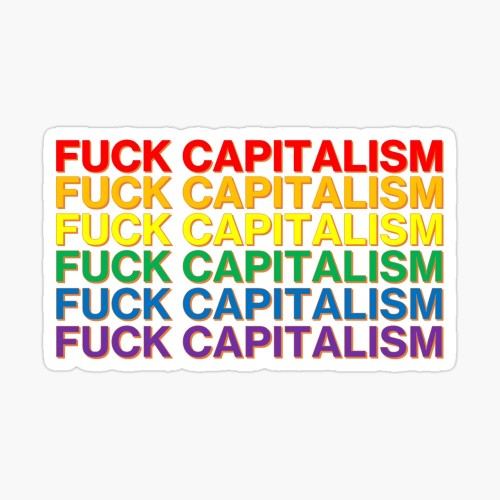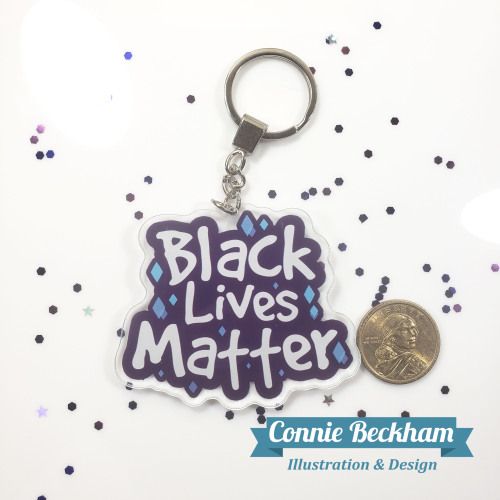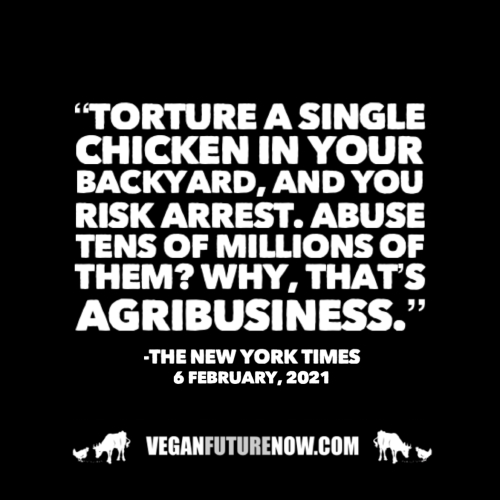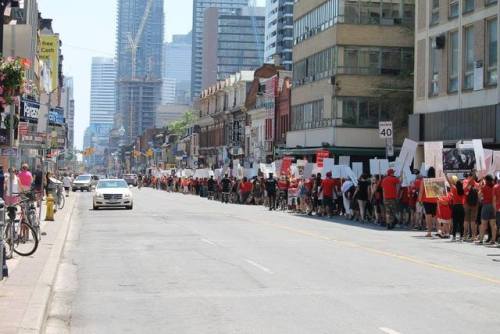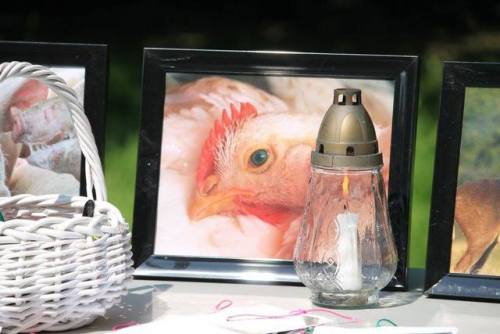#social justice
Check out this sticker on my redbubble!
Sticker: https://www.redbubble.com/i/sticker/Rainbow-Fuck-Capitalism-by-aahanke/84834946.EJUG5?asc=u
Post link
anyway white supremacy is still a problem in leftist circles and we should talk about it more
you should be incredibly critical of the way you envision and talk about a post-capitalist justice system cuz some of y’all really are just reinventing lynch mobs and calling it something new.
Just an addition: White supremacy isnt just nazis and skinheads and swastikas. Its also voting for “tough on crime” candidates, gentrifying neighborhoods, keeping your kids away from “the wrong kinds of people”, talking down towards immigrants, demanding quinoa and other “exotic food” but demanding it be cheap and accessible 365 days a year, etc etc.
Stop trying to make disabled people feel bad for being loud and assertive about their needs.
We do not owe you simpering kindness or meek pleading in exchange for access, and you have no right to deny us just because you think we’re “rude”.
Black lives matter and black girl magic charms are available in my etsy shop! These are 3inches and comes with a FREE matching sticker!
Post link
“WE SERVE THE PEOPLE”
New York City chapter of the Black Panther Party’s Harlem office, circa 1970 with racks of free clothes for the community in front.
Post link
The Promise and Contradictions of Ethical Consumerism by Nicki Lisa Cole
Ethical capitalism and consumerism. Do they represent moves toward real egalitarian change for the poor and workers of the world? Do they suggest hope for a long-term livable planet? Or are they merely symbolic concessions to appease critiques of a deeply problematic system of global production and consumption?
Suddenly I saw around me a world of goods framed as the “right” choice for social and environmental reasons. Whether it was sweatshop free-clothing, Fair Trade or organic food products, sustainably sourced wood, “green” cleaning products and cosmetics, or hybrid vehicles, the message was the same: by buying this product, you are changing the world for the better. The pervasiveness of this message struck me as an adaptation of the ideological foundation of capitalism that seemed a direct response to the rising popular awareness of the environmental and social problems associated with global capitalism.
It seems then that at its heart, ethical consumption is premised on the recognition of problems associated with global capitalism (at least implicitly), and for this reason it can be said that as a social phenomenon it expresses a critical orientation and awareness. It is the manifestation of anxiety on the part of consumers over how the system of global capitalism works, and the role that they play within it. Yet participants stop short of realizing this critique for what it is–a condemnation of a system. Instead they focus on select bad actors and fault governments and greedy middlemen in producing nations for creating the conditions that exploit coffee producers and bind them within an impoverished existence.
While it seems that consumers harbor concern over the actions of corporations and the relations they cultivate with producers around the world, they also lack real knowledge of the sourcing models that bring coffee to their mouths. In this light, consumer concern manifests as well-intentioned reactionary purchasing. I see this as evidence of the successful commodification of morality. By embedding a narrative that features happy producers thriving due to the choices of consumers, the specialty coffee industry has successfully created a market for morality. Together the discourse and imagery that surrounds the product functions as a sign (in the Saussurian sense (1916)) of ethical relations of trade, which signals to the consumer that all is well and they have done the right thing. By foregrounding the image and narrative of the laborer the industry has convinced consumers that they do not need to worry about the laborer. This is a more gripping form of Marx’s commodity fetishism (1978), since the relations and real conditions of production remain obscured by ethical coffee. The narrative presented by it masquerades as a removal of the curtain, but in fact it is the same curtain painted over with an enchanting scene.
So where is the hope in this situation? Hope lies in the unease, the anxiety, and the discomfort that pushes consumers to harbor suspicions of the relations and conditions of production. But, if we are to make moves toward real social change and global economic justice, we must embrace our consumer anxieties, not assuage them through the self-gratifying channels of consumption. To the extent that we opt for the simple fix of ethical consumption we fail to actually confront the root of the problem that causes these anxieties–the system of capitalism. Instead, we reproduce the very thing that troubles us. We must confront and marinate in our anxieties, allow them to trouble us, and then use them as motive to engage in what Marcuse (1964) called “negative thinking”–the unthinking of the norms that limit the possibilities for what social and economic relations can look like. Only then can we imagine social justice into being.
This can easily be extrapolated to why people buy into the humane myth. Companies are commodifying compassion by constraining the moral issue within the framework of consumerism. If you’re a compassionate and moral person, would you want to buy “free-range, humanely killed” animals or factory farmed animals? The concept of not buying animals is removed from the question entirely because consumerism is framed as the only active decision with the possibility of changing the world.
Nicki writes, “Ethical coffee is framed as a response to bad conditions and unmet needs in coffee growing communities, and consumers and coffee companies are positioned as ethical actors who help producers.” Change a few words and we get, “Humane slaughter is framed as a response to bad conditions and unmet needs in animal agriculture and factory farming, and consumers and companies like Whole Foods are positioned as ethical actors who help animals.” The marketing around ethical coffee and “ethical meat” is nearly the same as well. Pictures of happy cows and happy chickens frolicking in green pastures with white clouds and a blue sky in the background – surely these animals are eager and willing to give their lives so that humans can eat their bodies, just as coffee workers are eager and willing to work to provide humans with specialty coffee.
Companies and farms that promote “humane slaughter” thrive in this market of morality. They frame animal wellbeing as a product of consumer choices. By foregrounding the image of “happy animals”, they allow consumers to stop questioning the morality of eating animals. The truth is that labels mean nothing. And even if they did, there is no ethical justification for prematurely ending the life of another being, no matter how “happy” they were, or how “painless” their death is.
How to Uphold White Supremacy by Focusing on Diversity and Inclusionby Kẏra
Liberalism’s inherent racism.
[…] liberalism: the egalitarian principle which works to ignore and erase difference rather than to undo oppression. It strives for a post-feminist, post-queer, post-racial or racially colorblind world. Liberalism as an ideology deems equal rights and equal treatment as a higher priority than material justice, or as an effective means towards it. Its presumptions of equality are false, as individualist equality may be written into law and policy while material inequality thrives. It effectively abstracts and obscures power dynamics along lines of race, class, and gender. The difference between material justice and liberalism is the difference between actually making reparations for a long history of racism and countries like Austria, Finland, Hungary, France, and now Sweden removing all mentions of “race” from their legislation.
Liberalism is not the opposite of conservatism on a left-right political spectrum, but a set of values that informs various other political ideologies including conservatism and libertarianism. Even the most popular manifestations of feminism and radical political thought (anarchism, communism, and socialism) are their most liberal forms. You can recognize the influence of liberalism in any political philosophy or practice that , consciously or not , focuses on individual equality before social power. What is it that says that ending racism means setting aside our differences and finding commonality? Liberalism. What is it that says that we need love to bring us together and to end the hate which drives us apart? Liberalism. What is it that says to choose unity over disunion? Liberalism. What is it that says racism/sexism/sizeism hurts everyone? Liberalism.
The toxic effects of liberalism are clear in diversity advocacy and its language. […] diversity emphasizes the pragmatic benefits to morale, productivity, and profits. Diversity is the practice of mixing together different bodies within a common organization, and is a prime resource to be capitalized upon by businesses and organizations that are white owned and/or operated. Diversity still benefits those in power by taking advantage of the various experiences and vantage points of different racial/gender/sexual backgrounds. Rather than respecting difference and redistributing power based on it, diversity only “celebrates” difference in order to exploit multiculturalism for its economic value.
When we talk about diversity and inclusion, we necessarily position marginalized groups as naturally needing to assimilate into dominant ones, rather than to undermine said structures of domination. Yes, we need jobs; we need education; we need to access various resources. What we don’t need is to relegate ourselves to the position of depending on someone else to offer us inclusion and access to those resources. Inclusion is something they must give, but our liberation is something we will take.
This reminds me of The Social Justice Advocate’s Handbook: A Guide to Gender by Sam Killermann, the creator of the genderbread person, which talks about – in a more colloquial manner – the difference between equality and equity.
There’s also Eli Erlick’s recent article, Why Equality Is Toxic to the Transgender Movement, which has a great illustration on why advocating for equality instead of equity is harmful. She writes, “Hate crime laws are framed as initiatives that will end attacks on transgender people, making them ‘equally’ protected under the law. In reality, this legislation is another cisgender issue pushed by neoliberal politicians to further expand prisons and prevent real change. Hate crime legislation does nothing to protect trans people. Instead, it only increases sentencing for offenders. Is doubling a 7-year sentence going to deter crime? Statistically, the answer is no. Hate crime laws do not look at the roots of the problem, including systemic racism and transphobia. Individualizing the problem by sending one person to prison does very little for our community as a whole and does not work within a restorative justice framework. People who have committed these acts can be educated along with the public on transgender issues, which will actually stop the violence. This is not to mention many people incorrectly think anti-transgender victimization has ended when hate crime legislation has passed — and then proceed to ignore the perpetual violence we still face.”
Eli also mentions the same problem that Hana did in their interview on the intersections between queer human and non-human animal liberation, where a focus on the similarities between minority groups and the majority ends up harming those most marginalized:
Large, cisgender-run LGBT organizations attempt to operate under a “we’re just like you” model to incorporate us into these industries, which is not only inaccurate, but also diminutive to trans culture. We are not “equal” or “the same” as cisgender people. Like every marginalized community, we have unique needs and identities that equality measures do not take into consideration.
Looping back to A Guide to Gender, this is an example of where the Golden Rule fails. When we focus on “do unto others as you would have them do unto you”, we lose sight of other people’s unique needs and identities that we do not have. Instead, we need the Platinum Rule: “do unto others as they would have done unto them”.
The Six Swans by Mallory Ortberg
A re-telling of the Grimm Brothers’ fairy tale.
The king’s wife had never been a king’s daughter. She was outranked by her belly.
Now the king’s wife had given birth to a king’s daughter, and he named the girl himself. Her hair and her eyes and her brows were brown-black, her voice was as clear as the waves breaking on the shore, and she was as lovely a king’s daughter as anyone could wish. She ate from a little golden dish and drank from a little golden cup that he had made specially for her and placed right next to his own seat at table.
The king’s wife again turned her plate out for the king’s dogs, but now that she was not growing a daughter, nobody minded.
[…]
“Never have I seen anyone so beautiful,” he told her. Her hand felt dead and alien in his, and she said nothing. The man tore off his cloak and swept it round her shoulders. “You are too beautiful to remain here in these woods all alone,” he declared, as if annexing her. “You will return with me, and I will see to it that you are dressed and honored as befits your station, because as surely as I am a king, you are a king’s daughter.”
Being beautiful had never prevented her from remaining in the woods alone before, but there was nothing she could do about it. Beauty was for public consumption. It was not private property. It gave him the right to talk to her as if they had been introduced, and take her hand, and make her wear his cloak, and take him from her tree and to his home.
They dismounted at the gates of a great marble building, the floors of which were covered in carpets richer and more sumptuous to the touch than her bruised feet could have hoped for. The walls, too, were hung with tapestries dazzling to the eye, but she did not see them for her tears. She could not understand how she was here, when she had never said Yes to being taken. How could a girl who could not speak agree to any of this?
She was beginning to learn the danger of silence, and that someone who wishes to hear a Yes will not go out of his way to listen for a No.
This is lovely.
The Rise of Victimhood Culture by Conor Friedersdorf
A recent scholarly paper on “microaggressions” uses them to chart the ascendance of a new moral code in American life.
Victimhood cultures emerge in settings, like today’s college campuses, “that increasingly lack the intimacy and cultural homogeneity that once characterized towns and suburbs, but in which organized authority and public opinion remain as powerful sanctions,” they argue. “Under such conditions complaint to third parties has supplanted both toleration and negotiation. People increasingly demand help from others, and advertise their oppression as evidence that they deserve respect and assistance. Thus we might call this moral culture a culture of victimhood … the moral status of the victim, at its nadir in honor cultures, has risen to new heights.”
Since third-parties are likeliest to intervene in disputes that they regard as relatively serious, and disputes where one group is perceived as dominating another are considered serious by virtue of their aggregate relevance to millions of people, victimhood culture is likeliest to arise in settings where there is some diversity and inequality, but whose members are almost equal, since “a morality that privileges equality and condemns oppression is most likely to arise precisely in settings that already have relatively high degrees of equality.”
I really like this comment by Statetheobvious: “America is a culture based heavily on the idea of the underdog triumphing, on the guy no one counted showing up all his detractors. It’s why every politician will talk about how their grandfather was a working man even as they themselves went to exclusive private schools. Creating a narrative about how everyone is out to get you, for shallow and bigoted reasons especially, is a way of signalling that you’re the hero of the story. This microaggression culture simply takes it to its logical conclusion. It’s obnoxious and makes America a worse place to be, but everyone does it, from all sides of the political spectrum.”
Jonathan Haidt, in his evaluation, Where microaggressions really come from: A sociological account, highlights, “The key idea is that the new moral culture of victimhood fosters ‘moral dependence’ and an atrophying of the ability to handle small interpersonal matters on one’s own. At the same time that it weakens individuals, it creates a society of constant and intense moral conflict as people compete for status as victims or as defenders of victims.”
Again, the paradox: places that make the most progress toward equality and diversity can expect to have the “lowest bar” for what counts as an offense against equality and inclusivity. Some colleges have lowered the bar so far that an innocent question, motivated by curiosity, such as “where are you from” is now branded as an act of aggression.
At universities and many other environments within modern America and, increasingly, other Western nations, the clash between dignity and victimhood engenders a similar kind of moral confusion: One person’s standard provokes another’s grievance, acts of social control themselves are treated as deviant, and unintentional offenses abound. And the conflict will continue. As it does each side will make its case, attracting supporters and winning or losing various battles. But remember that the moral concepts each side invokes are not free-floating ideas; they are reflections of social organization. Microaggression complaints and other specimens of victimhood occur in atomized and diverse settings that are fairly egalitarian except for the presence of strong and stable authority. In these settings behaviors that jeopardize equality or demean minority cultures are rare and those that occur mostly minor, but in this context even minor offenses – or perceived offenses – cause much anguish. And while the authorities and others might be sympathetic, their support is not automatic. Add to this mix modern communication technologies that make it easy to publicize grievances, and the result, as we have seen, is the rise of a victimhood culture.
It’s important to realize that microaggressions aren’t superfluous, though. Megan McArdle, in How Grown-Ups Deal With ‘Microaggressions’, writes, “The debate over microaggressions often seems to focus on whether they are real. This is silly. Of course they’ve always been real; only the label is new. Microaggressions from the majority to the minority are as real as Sunday, and the effect of their accumulated weight is to make you feel always slightly a stranger in a strange land. The phenomenon is dispiriting, even more so because the offenders frequently don’t realize that their words were somewhere between awkward and offensive (once again). On the other hand, in a diverse group, the other thing you have to say about microaggressions is that they are unavoidable. And that a culture that tries to avoid them is setting up to tear itself apart.”
If you establish a positive right to be free from alienating comments, it’s hard to restrict that right only to people who have been victimized in certain ways, or to certain degrees. It’s easy to say everyone has a right not to be alienated. It’s also easy to say “you should only seek social or administrative sanction for remarks that are widely known and understood to be offensive slurs.” It is very, very hard to establish a rule that only some groups are entitled to be free from offense – because the necessary corollary is that it’s fine to worry the other groups with a low-level barrage of sneers, and those groups will not take this lying down. The result will be proliferation of groups claiming victim status, attempting to trump the victim status of others.
Complaints about microaggressions can be used to stop complaints about microaggressions. There is no logical resting place for these disputes; it’s microaggressions all the way down. And in the process, they make impossible demands on members of the ever-shrinking majority: to know everything about every possible victim group, to never inadvertently appropriate any part of any culture in ways a member doesn’t like, or misunderstand something, or make an innocent remark that reads very differently to someone with a different experience. Which will, of course, only hasten the scramble for members of the majority to gain themselves some sort of victim status that can protect them from sanction.
Love in abundance: Hana Low on the intersections between queer human and non-human animal liberation by Animal Voices
Many of us have heard of the term “trickle-down economics”, but Hana Low wants to introduce us to “trickle-up social justice”. Coined by Dean Spade, this term is the jumping off point of a talk Hana gives about the connections between fighting oppression for LGBTQ communities and non-human animals.
Hana alludes to a few common struggles that these groups might face, such as the mainstream views that the lives of LGBTQ humans or non-human animals are “cute” or “tragic”. These two judgments ignore the diversity of all human and non-human animals, while also creating hierarchies that suggest that the most relatable to the hegemonic group are the ones most deserving of freedom and justice.
Hana also offers insight into other important topics that animal advocates should be aware of. They speak about the ways in which different groups have their bodily autonomy restricted or removed. Hana also tells us about community and justice-based solutions to crime that are alternatives to the current model of that incarcerates and does harm. Finally, we discuss the importance of having an approach to animal liberation that incorporates social justice for all groups, not just non-human animals, which includes addressing and being accountable for reproducing other forms of oppression, such as racism or heterosexism. Social justice should not leave anyone behind, and we should find solidarity in our pursuit of a more compassionate world.
Hana’s insights and comments on trickle-up animal liberation, the use of intelligence as a measure of an animal’s worth, how the harm in promoting “cute” animals is related to the harm in promoting heteronormative behaviors in the context of homosexuality (i.e. coaxing empathy in terms of similarities harms those furthest from the “norm”), the harm in portraying queer and non-human animals as “tragic beings”, the legal system and restorative justice, bodily autonomy, polyamory, discrimination and oppression in the vegan community, …the conversations in this episode were great. I often struggle with extending compassion towards animals that are not mammals (e.g. insects), so their view on love and the protection of all lives is inspiring.
I understand the concept of racial fetishism, but I fail to see why it’s problematic.
So a white guy likes asian women because they’re asian (and thus he associates them with stereotypes like submissiveness and softness etc) and he likes manga and schoolgirls and japanese culture etc. And he wants a gf who looks east asian… so what ?
It’s not that he doesn’t care about these women or doesn’t see their humanity, it’s just that he likes their appearance. And he’s not appropriating the culture or doing anything disrespectful, he just has a preference when it comes to his romantic partners.
Before multiculturalism was a thing, people could say “I prefer blonde girls, I prefer girls with big thighs, I don’t like skinny, I like brown-hair, I like a submissive girl, I like an assertive girl” but now that different people live together and cultures mix together, it’s somehow innapropriate to say “I prefer Japanese girls, or Latinas, or "I don’t wanna date within this particular ethicity”. Why ?
~Land of hope and glory documentary
~Viva, a fab UK charity which has loads of info
~ This book out herewhich is free to download which I would highly recommend to everyone.
~ Testimonies from many former “humane” farmers here
Post link

~Land of hope and glory documentary
~Viva, a fab UK charity which has loads of info
~ This book out herewhich is free to download which I would highly recommend to everyone.

~Land of hope and glory documentary
~Viva, a fab UK charity which has loads of info
~ This book out herewhich is free to download which I would highly recommend to everyone.
~Pasture Raised Eggs: the Humane, Sustainable Fiction
~ A past post I did on selective breeding in chickenshere
~Free range is a con: no such thing as ethical eggs
~British free-range eggsandanother “free-range farm” and “free-range hens” here
Post link
Yesterday (June 10th 2017), Toronto held its fifth March to Close All Slaughterhouses, along with dozens of other cities across five continents! Once again we had an incredible turnout with about 800 people participating!
As with the years before, we marched down all the major streets at the city’s core. We also did the die-in, where the activists laid down on the ground to symbolically represent the trillions of animals we tragically lose to the animal agriculture industry every single year, and to show solidarity. As we lay silent on the ground, screams recorded from dying animals inside actual slaughterhouses is broadcasted over a loud-speaker. Most likely, anyone passing by has never even seen the front of a slaughterhouse, let alone heard the horrific sounds that resound from inside; this is intentional on the part of the industry because, as Paul McCartney famously said, “if slaughterhouses had glass walls we would all be vegetarian”. This is one of the reasons for why the die-ins are such incredibly powerful demonstrations; they bring attention to the voices of those who are violently silenced. A newer addition to the march was the inclusion of a Direct Action Now disruption inside a “Whole Foods”, where some of the activists walked in and around the store while holding up their signs depicting the disturbing and heart-shattering reality that was the life of the animal whose flesh a customer is contemplating purchasing. These actions are called “disruptions” because they do precisely that, they disrupt the “normal” act of shopping for animal products, and in so doing, disrupt the speciesist mindset that allows for this shopping in the first place. Finally, towards the end of the march, a memorial was held for all the beautiful angels who have fallen victim to this incredibly cruel and violent system we have developed,.during which flowers and other items were symbolically laid beside pictures of a few of these lovely beings, who represented the plight of their entire species. All in all, it was an incredibly moving and powerful event, and we are CERTAIN that we planted seeds of compassion in many minds, and that at least one person will make a change in their lifestyle in order to show love, the love that we know each and every one of you has, even if it is currently buried deep inside, to all persons, whether animal or human.
Listen to your heart. Go vegan.
Click here to learn about Toronto Pig Save and join our vigils! And while you’re at it, here’s the link to where you can purchase our merchandise, should you so desire.
Click here to learn about The Save Movementandfind a Save group in your area. Can’t find one? Click here for tips on how to start one in your own city.
Photo credit to Chandrika Joshi and Faith Keen.
Post link

